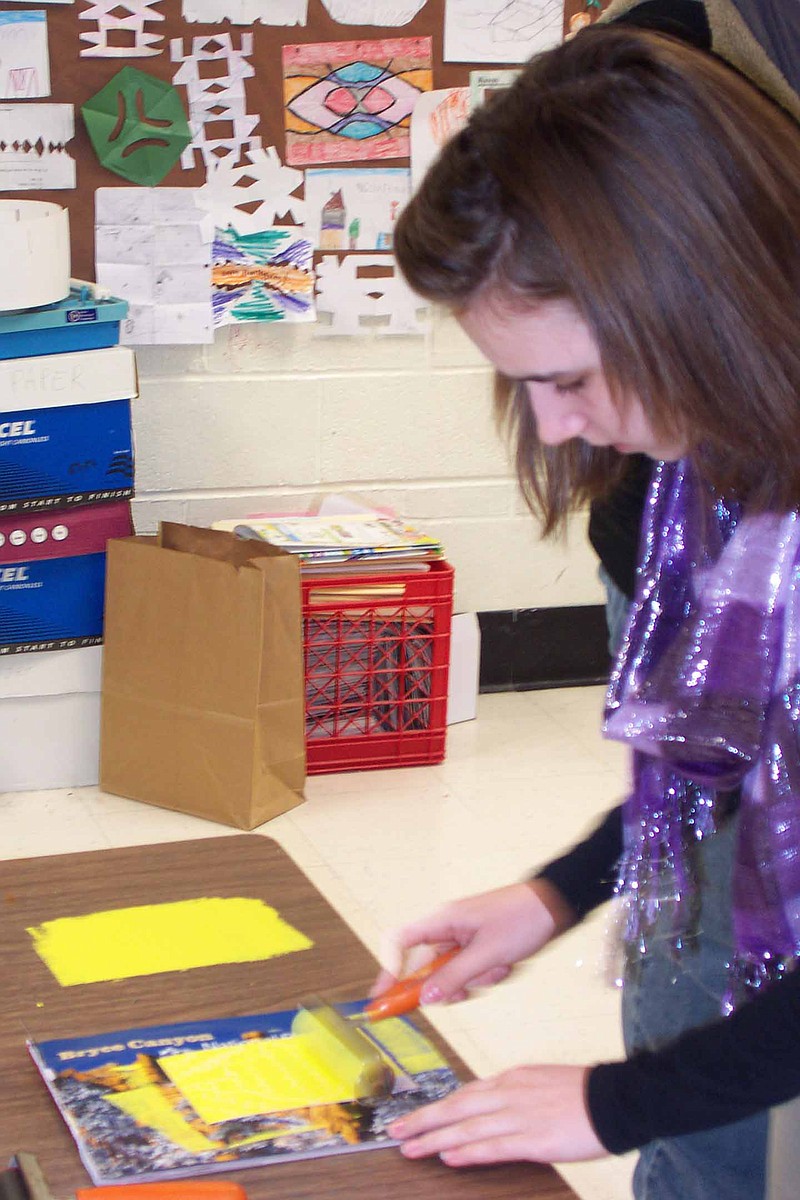RUSSELLVILLE - When students bring in voluntary artwork they made at home or when they're eagerly asking when favorite art projects will come up in the school year, that's how Amy Potts knows her students love art.
She begins the school year at Cole County R-I Elementary School with a bare bulletin board, and by the end of first semester it is nearly full of student sketches and notes.
This March is Art Is Education month. This week, Potts took several students to the Capitol for Youth Art Day, where their artwork was on display with others from across the state.
At 6 p.m. April 9, the elementary hallways will be lined with works from nearly all of the 270 students as part of the Fine Arts Festival, which includes music performances in the cafeteria.
"Kids like art, even if they're not great at it," Potts said. "My goal is when they leave, they will love art."
The art classroom may provide a diversion from left-brain, classroom work, she suggested.
"I'm right-brained; maybe that's why children like it - it's a whole different feeling," Potts said.
When Potts told the seventh-grade art class recently that they would do print making, most of them thought it would be done with a computer.
As they created their handmade layers of colors and indented designs, sometimes it turned out the way they planned and sometimes not, said Zechariah Coulston.
"We do something interesting every day," said Anna Koestner. "And it always turns out different than you think it will."
Alyssa Miller said she likes making things she can show to others.
"I enjoy the freedom of what we get to draw," said Zechariah Coulston. "You can say what you want without using words."
In college, Potts discovered her enjoyment of ceramics.
So when she found funds available from years of donations, she requested a kiln so students could fire their clay pieces.
"The kids love the clay," Potts said. "It's so different; you can touch it, feel it, make something that's real."
Posters of historical artwork or notable styles line the top of the art room walls and the back of each student chair is the name of a famous artist.
These are subtle ways Potts exposes students to the world of art.
They may not memorize facts or dates, but she often refers to the professional works to reinforce vocabulary or as examples of technique.
Her grandfather painted and his sister was a photographer in the early 1900s. That may have been an influence on Potts.
She also was an airbrush artist at Six Flags Over Georgia, where she learned anyone with practice can manage new skills.
"If you practice, practice, practice, you can learn to be an artist, just like shooting freethrows," Potts said.
The skills her students learn through their elementary art years may also benefit them in tasks later in life, she said.
For example, she uses the Visual Thinking Strategy to teach students how to look at a painting. The same strategy is taught to medical students.
They are learning critical thinking and collaboration. And they have hands-on opportunities to exercise classroom knowledge, such as mathematical measurements.
She also refers to a six-feet-tall list of Grade Level Expectations from the Missouri Department of Elementary and Secondary Education as a guide for her project selections.
"Without art, it would be terrible," Potts said. "It would be like exercising only one side of your body or not getting lunch or recess."

